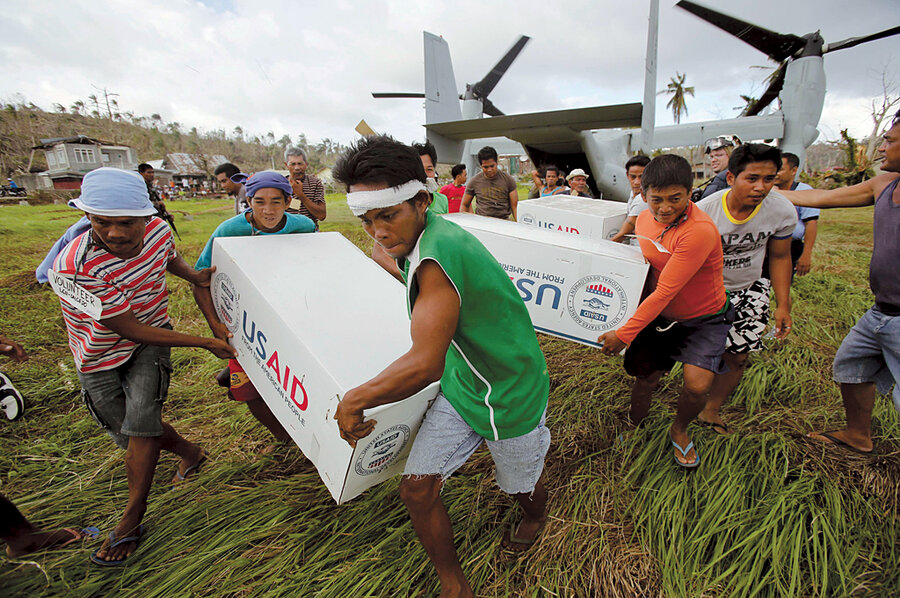Food aid: Is there room for local sourcing?
Loading...
Food aid is a global business that millions depend on, from the typhoon-stricken Philippines to war-torn Syria. Yet when it comes to the sourcing of this aid, there's a growing debate on how much food should be bought locally. (See related article.)
Take the Philippines, where more than 5,000 lost their lives to typhoon Haiyan. Many more were displaced. Aid agencies had a choice of shipping food directly from the donor country or using donated funds to buy locally, in this case either from the affected country or nearby countries such as Thailand and Vietnam that are major food exporters.
Both approaches come with trade-offs. Shipping home-grown produce supports the donor country's farming and shipping industries, while aiding faraway communities. But shipments take longer to arrive, carry a higher price tag, and may undercut local farmers struggling to sell crops amid the post-disaster upheaval.
Debate on how to better balance these two objectives has smoldered in Washington for years. The Obama administration and some lawmakers seized on the Philippine emergency to push for a change in US law to allow more local food procurement.
US food assistance falls under the farm bill, currently stalled in Congress. Existing laws restrict non-US purchases of food aid to around $300 million per year or about 20 percent of total food assistance. An attempt to raise that threshold to 45 percent was struck down this summer in the House of Representatives.
To date, the United States has contributed $10 million in food aid to the Philippines: around $8 million for local purchases of food and the rest for an airlift of 55 tons of biscuits from Miami and a shipment from Sri Lanka, where US-grown rice had been stored in anticipation of regional emergencies. But because of the 20 percent quota, US officials have limited scope to buy locally, as funds have already been committed in the current financial year to Syria and Congo.
The US is the largest player in food aid: With $1.4 billion in 2013, it accounts for 36 percent of contributions to the United Nations World Food Program. However, it is the only major food-aid donor to tie such a large share of its food aid to domestic interests. Other donors such as the European Union and Japan grant flexibility to buy food locally.







